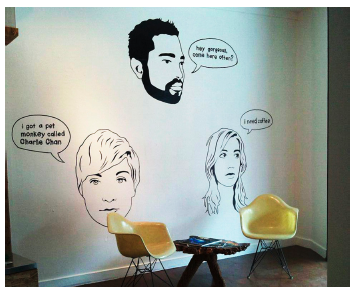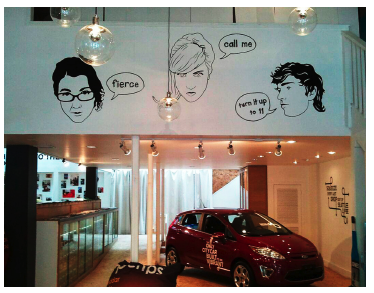 At her product design class’s final pin-up, undergraduate Tara Nielsen said her project didn’t receive any votes for favorite design. But her simple yet dynamic “Billow Napkin Dispenser” later won a bigger award: one of three Zinc Challenge awards from Interzinc, a zinc industry-marketing group. Nielsen earned $2,000 for her design and the product design program netted another $1,000.
At her product design class’s final pin-up, undergraduate Tara Nielsen said her project didn’t receive any votes for favorite design. But her simple yet dynamic “Billow Napkin Dispenser” later won a bigger award: one of three Zinc Challenge awards from Interzinc, a zinc industry-marketing group. Nielsen earned $2,000 for her design and the product design program netted another $1,000.
“Anyone would be surprised to get a two-thousand dollar check in the mail,” said Nielsen, a fourth-year product design major. “It’s given me the confidence to kick start my last year. I’m excited to get back into it.”
The competition was open to any student design that specified zinc in the design of a dispenser. As part of the competition rules, only students who scored above 70 percent on a written quiz about zinc could enter. This is the second year in a row a University of Oregon student has earned the award. Interior architecture student Jessica Richards won last year for a microphone design.
All of the students in Nielsen’s “Objects and Impacts” class were challenged to redefine the humble napkin dispenser by associate professor and product design program director Kiersten Muenchinger. As an exercise in design process, students began by disassembling and measuring existing dispensers. They uncovered the positive and negative attributes and identified problems they could solve. Nielsen said she focused on the simplicity and familiarity of the everyday dispenser and avoided any automated or electronic gadgetry.
“From the beginning, I had decided that it was just a napkin dispenser,” she said. “I wanted to maintain the preexisting design language between user and object, what it is and how it functions. It was a no-brainer.”
But her design wasn’t purely functional. She knew she wanted to call out the properties of zinc and create a dynamic shape, all within an easily assembled housing free of spot-welds.
“For me as a designer, I tend to favor more dynamic shapes. I’m not a fan of plain old cubes or cylinders,” she said. “I had hoped to make something more aesthetically pleasing yet still keep my design simple both formally and functionally. That’s a successful design to me. If it’s beautiful and functional, then it’s likely to stay around a long time, and in that sense, it is sustainable.”
Like a generic dispenser, Nielsen’s design employs folded sheet metal to create the springiness that pushes napkins outward. However the bulging form of her Billow design goes further to express that internal movement in an eye-catching way. On top, a T-shaped wedge of cast zinc adds upper weight to create the spring resistance and puts zinc front and center.
This isn’t Nielsen’s only recognition in a recent design competition. One of her group projects for another class was shortlisted in the Seoul International Design Competition Design for All, co-sponsored by the website Designboom. Her group’s entry, “Seeing Through Touch,” is a series of ceramic bathroom floor tiles that have a raised, tactile pattern to alert blind users with canes where fixtures such as sinks and towel dispensers are located above. She and her collaborators Chris Owyang, Maddy Belval, Kevin Do and Amanda McCombs were encouraged to enter by their adjunct instructor Sarah Huston. Their entry was cited in the “Space for All” category for interior and environmental design.


